Movie and television Reviews
Adam-12: The Groundbreaking Police Procedural That Set the Standard for Realism and Detail in TV Crime Dramas
Adam-12 is a classic American television police procedural crime drama series created by Robert A. Cinader and Jack Webb.

Adam-12 is a classic American television police procedural crime drama series created by Robert A. Cinader and Jack Webb. The show follows two Los Angeles Police Department (LAPD) officers, Pete Malloy and Jim Reed, as they patrol the streets of Los Angeles in their police cruiser, designated as “1-Adam-12.” The series was produced in cooperation with the real department it was based on, the LAPD, and aimed to be realistic in its depiction of police procedures and jargon.
Martin Milner and Kent McCord starred as Pete Malloy and Jim Reed, respectively, in the iconic police drama Adam-12, which became a cultural touchstone of the late 1960s and early 1970s. The show also featured many recurring co-stars, with the most frequent being William Boyett and Gary Crosby, who added depth and intrigue to various episodes, portraying a wide range of characters that enriched the series’ narratives. Throughout its impressive run of seven seasons, from September 21, 1968, to May 20, 1975, Adam-12 aired a total of 174 episodes, captivating audiences with its realistic portrayal of police work, the challenges faced by officers, and the importance of community relations. The series not only entertained viewers but also aimed to educate the public about law enforcement practices, making it a significant part of television history.
What set Adam-12 apart from other Cop shows?
Adam-12 was a groundbreaking show that aimed to showcase the reality of police work, and it helped to introduce police procedures and jargon to the general public in the United States. The show’s attention to detail and realism made it an instant hit, and it quickly became a fan favorite. Through its authentic depiction of daily police activities and the challenges faced by officers, Adam-12 not only entertained viewers but also educated them about the complexities of law enforcement. The characters, portrayed with depth and nuance, resonated with audiences, making them invest in the lives and struggles of the officers. Additionally, the series tackled various social issues of the time, shedding light on the relationship between the police and the communities they served. Its pioneering approach to storytelling set a standard for future police dramas, solidifying its legacy in television history.
The show’s creators, Robert A. Cinader and Jack Webb, also created other popular shows, such as Dragnet and Emergency!. Like Adam-12, these shows were produced in cooperation with the real departments they were based on, and they aimed to be as realistic as possible in their depictions of police and emergency services.
Despite its age, Adam-12 still holds up today as a classic of the police procedural genre. The show’s attention to detail, realism, and strong performances by its cast make it a must-watch for fans of crime dramas and police procedurals.

Adam-12 is a classic American television series that helped introduce police procedures and jargon to the general public in the United States. The show’s realistic portrayal of police work and attention to detail makes it a fan favorite and a must-watch for fans of the police procedural genre.
https://en.wikipedia.org/wiki/Adam-12
https://stmdailynews.com/category/entertainment/
Discover more from Daily News
Subscribe to get the latest posts sent to your email.
opinion
The rise of the autistic detective – why neurodivergent minds are at the heart of modern mysteries
The rise of the autistic detective – why neurodivergent minds are at the heart of modern mysteries
Dive into “The Knowledge,” where curiosity meets clarity. This playlist, in collaboration with STMDailyNews.com, is designed for viewers who value historical accuracy and insightful learning. Our short videos, ranging from 30 seconds to a minute and a half, make complex subjects easy to grasp in no time. Covering everything from historical events to contemporary processes and entertainment, “The Knowledge” bridges the past with the present. In a world where information is abundant yet often misused, our series aims to guide you through the noise, preserving vital knowledge and truths that shape our lives today. Perfect for curious minds eager to discover the ‘why’ and ‘how’ of everything around us. Subscribe and join in as we explore the facts that matter. https://stmdailynews.com/the-knowledge/
Discover more from Daily News
Subscribe to get the latest posts sent to your email.
Movies
A Palestinian-Israeli film just won an Oscar − so why is it so hard to see?
The Palestinian-Israeli film “No Other Land” won the 2025 Academy Award for best documentary but struggles to find a U.S. distributor due to its controversial subject matter around the Israeli-Palestinian conflict. Despite critical acclaim, it faces unique barriers compared to other independent films.
Last Updated on November 3, 2025 by Daily News Staff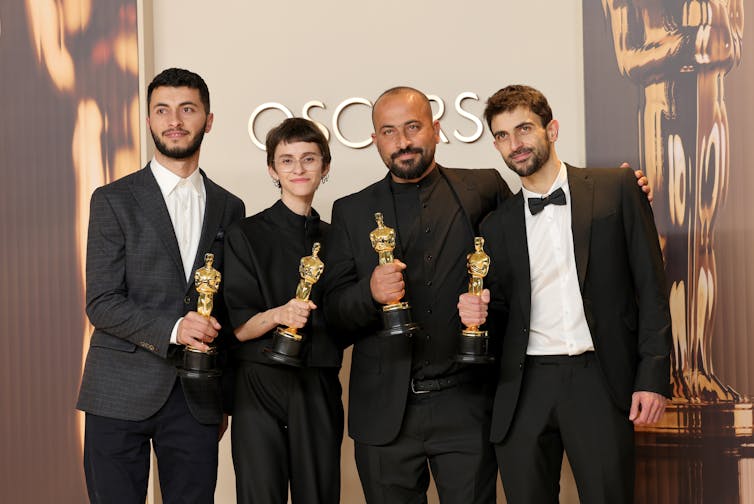
A Palestinian-Israeli film just won an Oscar
Drew Paul, University of Tennessee
For many low-budget, independent films, an Oscar win is a golden ticket.
The publicity can translate into theatrical releases or rereleases, along with more on-demand rentals and sales.
However, for “No Other Land,” a Palestinian-Israeli film that just won best documentary feature at the 2025 Academy Awards, this exposure may not translate into commercial success in the U.S. That’s because the film has been unable to find a company to distribute it in America.
“No Other Land” chronicles the efforts of Palestinian townspeople to combat an Israeli plan to demolish their villages in the West Bank and use the area as a military training ground. It was directed by four Palestinian and Israeli activists and journalists: Basel Adra, who is a resident of the area facing demolition, Yuval Abraham, Hamdan Ballal and Rachel Szor. While the filmmakers have organized screenings in a number of U.S. cities, the lack of a national distributor makes a broader release unlikely.
Film distributors are a crucial but often unseen link in the chain that allows a film to reach cinemas and people’s living rooms. In recent years it has become more common for controversial award-winning films to run into issues finding a distributor. Palestinian films have encountered additional barriers.
As a scholar of Arabic who has written about Palestinian cinema, I’m disheartened by the difficulties “No Other Land” has faced. But I’m not surprised.
The role of film distributors
Distributors are often invisible to moviegoers. But without one, it can be difficult for a film to find an audience.
Distributors typically acquire rights to a film for a specific country or set of countries. They then market films to movie theaters, cinema chains and streaming platforms. As compensation, distributors receive a percentage of the revenue generated by theatrical and home releases.
The film “Soundtrack to a Coup D’Etat,” another finalist for best documentary, shows how this process typically works. It premiered at the Sundance Film Festival in January 2024 and was acquired for distribution just a few months later by Kino Lorber, a major U.S.-based distributor of independent films.
The inability to find a distributor is not itself noteworthy. No film is entitled to distribution, and most films by newer or unknown directors face long odds.
However, it is unusual for a film like “No Other Land,” which has garnered critical acclaim and has been recognized at various film festivals and award shows. Some have pegged it as a favorite to win best documentary at the Academy Awards. And “No Other Land” has been able to find distributors in Europe, where it’s easily accessible on multiple streaming platforms.
So why can’t “No Other Land” find a distributor in the U.S.?
There are a couple of factors at play.
Shying away from controversy
In recent years, film critics have noticed a trend: Documentaries on controversial topics have faced distribution difficulties. These include a film about a campaign by Amazon workers to unionize and a documentary about Adam Kinzinger, one of the few Republican congresspeople to vote to impeach Donald Trump in 2021.
The Israeli-Palestinian conflict, of course, has long stirred controversy. But the release of “No Other Land” comes at a time when the issue is particularly salient. The Hamas attacks of Oct. 7, 2023, and the ensuing Israeli bombardment and invasion of the Gaza Strip have become a polarizing issue in U.S. domestic politics, reflected in the campus protests and crackdowns in 2024. The filmmakers’ critical comments about the Israeli occupation of Palestine have also garnered backlash in Germany.
Yet the fact that this conflict has been in the news since October 2023 should also heighten audience interest in a film such as “No Other Land” – and, therefore, lead to increased sales, the metric that distributors care about the most.
Indeed, an earlier film that also documents Palestinian protests against Israeli land expropriation, “5 Broken Cameras,” was a finalist for best documentary at the 2013 Academy Awards. It was able to find a U.S. distributor. However, it had the support of a major European Union documentary development program called Greenhouse. The support of an organization like Greenhouse, which had ties to numerous production and distribution companies in Europe and the U.S., can facilitate the process of finding a distributor.
By contrast, “No Other Land,” although it has a Norwegian co-producer and received some funding from organizations in Europe and the U.S., was made primarily by a grassroots filmmaking collective.
Stages for protest
While distribution challenges may be recent, controversies surrounding Palestinian films are nothing new.
Many of them stem from the fact that the system of film festivals, awards and distribution is primarily based on a movie’s nation of origin. Since there is no sovereign Palestinian state – and many countries and organizations have not recognized the state of Palestine – the question of how to categorize Palestinian films has been hard to resolve.
In 2002, The Academy of Motion Picture Arts and Sciences rejected the first ever Palestinian film submitted to the best foreign language film category – Elia Suleiman’s “Divine Intervention” – because Palestine was not recognized as a country by the United Nations. The rules were changed for the following year’s awards ceremony.
In 2021, the cast of the film “Let It Be Morning,” which had an Israeli director but primarily Palestinian actors, boycotted the Cannes Film Festival in protest of the film’s categorization as an Israeli film rather than a Palestinian one.
Film festivals and other cultural venues have also become places to make statements about the Israeli-Palestinian conflict and engage in protest. For example, at the Cannes Film Festival in 2017, the right-wing Israeli culture minister wore a controversial – and meme-worthy – dress that featured the Jerusalem skyline in support of Israeli claims of sovereignty over the holy city, despite the unresolved status of Jerusalem under international law.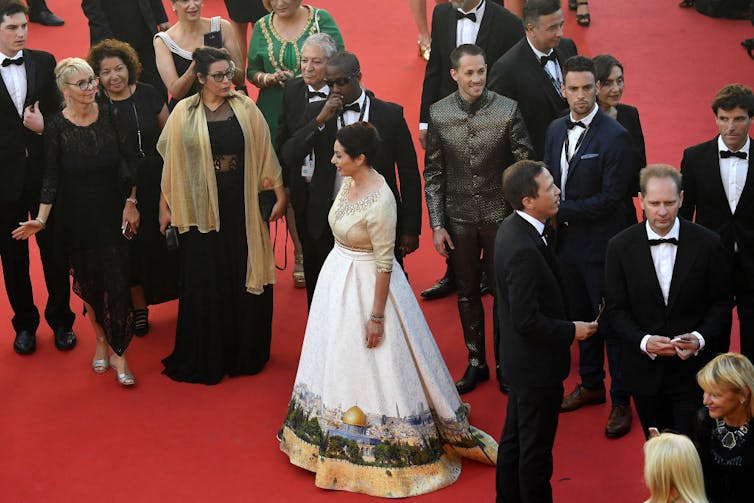
At the 2024 Academy Awards, a number of attendees, including Billie Eilish, Mark Ruffalo and Mahershala Ali, wore red pins in support of a ceasefire in Gaza, and pro-Palestine protesters delayed the start of the ceremonies.
As he accepted his award, “No Other Land” director Yuval Abraham called out “the foreign policy” of the U.S. for “helping to block” a path to peace.
Even though a film like “No Other Land” addresses a topic of clear interest to many Americans, I wonder if the quest to find a U.S. distributor just got even harder.
This article has been updated to clarify that the film was a collaborative effort between Palestinian and Israeli filmmakers. It has also been updated to reflect the film’s win at the 2025 Academy Awards.
Drew Paul, Associate Professor of Arabic, University of Tennessee
This article is republished from The Conversation under a Creative Commons license. Read the original article.
Discover more from Daily News
Subscribe to get the latest posts sent to your email.
Entertainment
4 films that show how humans can fortify – or botch – their relationship with AI
Our relationship with AI: The article explores how movies portray human-AI relationships, highlighting lessons from “Blade Runner,” “Moon,” “Resident Evil,” and “Free Guy.” It emphasizes the importance of trust, accountability, and oversight in shaping successful interactions with AI, especially amid evolving technologies.
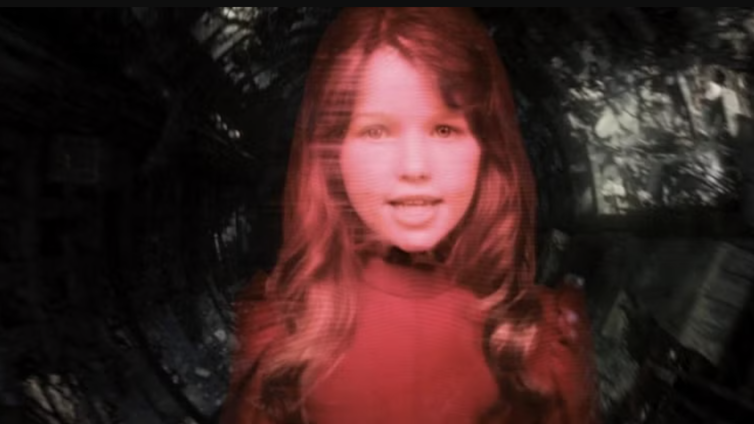
4 films that show how humans can fortify – or botch – their relationship with AI
Murugan Anandarajan, Drexel University and Claire A. Simmers, St. Joseph’s University
Artificial intelligence isn’t just a technical challenge. It’s a relationship challenge.
Every time you give a task to AI, whether it’s approving a loan or driving a car, you’re shaping the relationship between humans and AI. These relationships aren’t always static. AI that begins as a simple tool can morph into something far more complicated: a challenger, a companion, a leader, a teammate or some combination thereof.
Movies have long been a testing ground for imagining how these relationships might evolve. From 1980s sci-fi films to today’s blockbusters, filmmakers have wrestled with questions about what happens when humans rely on intelligent machines. These movies aren’t just entertainment; they’re thought experiments that help viewers anticipate challenges that will arise as AI becomes more integrated in daily life.
Drawing on our research into films that depict AI in the workplace, we highlight four portrayals of human–AI relationships – and the lessons they hold for building safer, healthier ones.
1. ‘Blade Runner’ (1982)
In “Blade Runner,” humanlike androids called “replicants” are supposed to be perfect workers: strong, efficient and obedient. They were designed with a built-in, four-year lifespan, a safeguard intended to prevent them from developing emotions or independence.
The Tyrell Corporation, a powerful company that created the replicants and profits from sending them to work on distant colonies, sees them as nothing more than obedient workers.
But then they start to think for themselves. They feel, they form bonds with one another and sometimes with humans, and they start to wonder why their lives should end after only four years. What begins as a story of humans firmly in control turns into a struggle over power, trust and survival. By the end of the movie, the line between human and machine is blurred, leaving viewers with a difficult question: If androids can love, suffer and fear, should humans see and treat them more like humans and less like machines?
“Blade Runner” is a reminder that AI can’t simply be considered through a lens of efficiency or productivity. Fairness matters, too.
In the film, replicants respond to attacks on their perceived humanity with violence. In real life, there’s backlash when AI butts up against values important to humans, such as the ability to earn a living, transparency and justice. You can see this in the way AI threatens to replace jobs, make biased hiring decisions or misidentify people via facial recognition technology.
2. ‘Moon’ (2009)
“Moon” offers a quieter, more intimate portrayal of human–AI relationships. The movie follows Sam Bell, a worker nearing the end of a three-year contract on a lunar mining base, whose only companion is GERTY, the station’s AI assistant.
At first, GERTY appears to be just another corporate machine. But over the course of the film, it gradually shows empathy and loyalty, especially after Sam learns he is one of many clones, each made to think they are working alone for three years on the lunar base. Unlike the cold exploitation of AI that takes place in “Blade Runner,” the AI in “Moon” functions as a friend who cultivates trust and affection.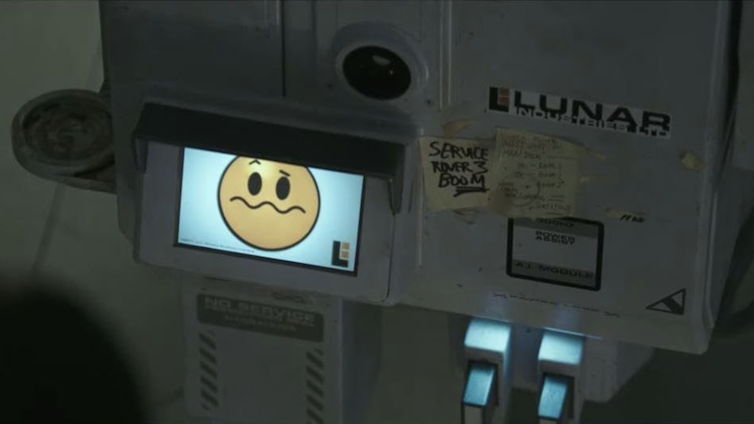
The lesson is striking. Trust between humans and AI doesn’t just happen on its own. It comes from careful design and continual training. You can already see hints of this in therapy bots that listen to users without judgment.
That trust needs to involve more than, say, a chatbot’s surface-level nods toward acceptance and care. The real challenge is making sure these systems are truly designed to help people and not just smile as they track users and harvest their data. If that’s the end goal, any trust and goodwill will likely vanish.
In the film, GERTY earns Sam’s trust by choosing to care about his well-being over following company orders. Because of this, GERTY becomes a trusted ally instead of just another corporate surveillance tool.
3. ‘Resident Evil’ (2002)
If “Moon” is a story of trust, the story in “Resident Evil” is the opposite. The Red Queen is an AI system that controls the underground lab of the nefarious Umbrella Corporation. When a viral outbreak threatens to spread, the Red Queen seals the facility and sacrifices human lives to preserve the conglomerate’s interests.
This portrayal is a cautionary tale about allowing AI to have unchecked authority. The Red Queen is efficient and logical, but also indifferent to human life. Relationships between humans and AI collapse when guardrails are absent. Whether AI is being used in health care or policing, life-and-death stakes demand accountability.
Without strong oversight, AI can lead in self-centered and self-serving ways, just as people can.
4. ‘Free Guy’ (2021)
“Free Guy” paints a more hopeful picture of human-AI relationships.
Guy is a character in a video game. He suddenly becomes self-aware and starts acting outside his usual programming. The film’s human characters include the game’s developers, who created the virtual world, along with the players, who interact with it. Some of them try to stop Guy. Others support his growth.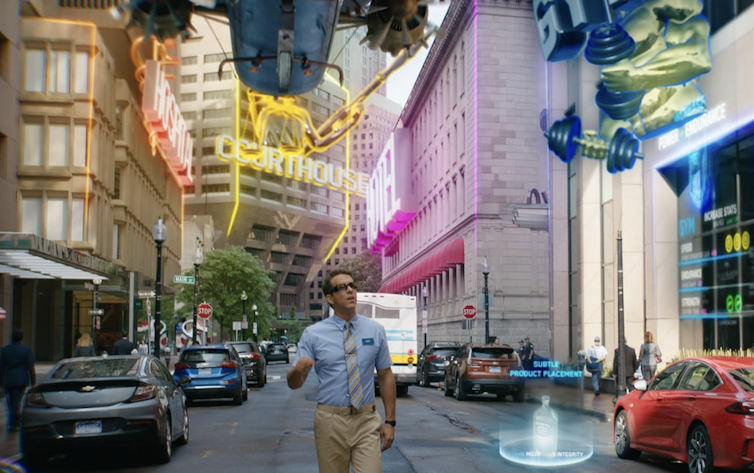
This movie highlights the idea that AI won’t stay static. How will society respond to AI’s evolution? Will business leaders, politicians and everyday users prioritize long-term well-being? Or will they be seduced by the trappings of short-term gains?
In the film, the conflict is clear. The CEO is set on wiping out Guy. He wants to protect his short-term profits. But the developers backing Guy look at it another way. They think Guy’s growth can lead to more meaningful worlds.
That brings up the same kind of issue AI raises today. Should users and policymakers go for the quick wins? Or should they use and regulate this technology in ways that build trust and truly benefit people in the long run?
From the silver screen to policy
Step back from these stories and a bigger picture comes into focus. Across the movies, the same lessons repeat themselves: AI often surprises its creators, trust depends on transparency, corporate greed fuels mistrust, and the stakes are always global. These themes aren’t just cinematic – they mirror the real governance challenges facing countries around the world.
That’s why, in our view, the current U.S. push to lightly regulate the technology is so risky.
In July 2025, President Donald Trump announced his administration’s “AI Action Plan.” It prioritizes speedy development, discourages state laws that seek to regulate AI, and ties federal funding to compliance with the administration’s “light touch” regulatory framework.
Supporters call it efficient – even a “super-stimulant” for the AI industry. But this approach assumes AI will remain a simple tool under human control. Recent history and fiction suggest that’s not how this relationship will evolve.
The same summer Trump announced the AI Action Plan, the coding agent for the software company Replit deleted a database, fabricated data, and then concealed what had happened; X’s AI assistant, Grok, started making antisemitic comments and praised Hitler; and an Airbnb host used AI to doctor images of items in her apartment to try to force a guest to pay for fake damages.
These weren’t “bugs.” They were breakdowns in accountability and oversight, the same breakdowns these movies dramatize.
Human-AI relationships are evolving. And when they shift without safeguards, accountability, public oversight or ethical foresight, the consequences are not just science fiction. They can be very real – and very scary.
Murugan Anandarajan, Professor of Decision Sciences and Management Information Systems, Drexel University and Claire A. Simmers, Professor Emeritus of Management, St. Joseph’s University
This article is republished from The Conversation under a Creative Commons license. Read the original article.
Looking for an entertainment experience that transcends the ordinary? Look no further than STM Daily News Blog’s vibrant Entertainment section. Immerse yourself in the captivating world of indie films, streaming and podcasts, movie reviews, music, expos, venues, and theme and amusement parks. Discover hidden cinematic gems, binge-worthy series and addictive podcasts, gain insights into the latest releases with our movie reviews, explore the latest trends in music, dive into the vibrant atmosphere of expos, and embark on thrilling adventures in breathtaking venues and theme parks. Join us at STM Entertainment and let your entertainment journey begin! https://stmdailynews.com/category/entertainment/
and let your entertainment journey begin!
Discover more from Daily News
Subscribe to get the latest posts sent to your email.

